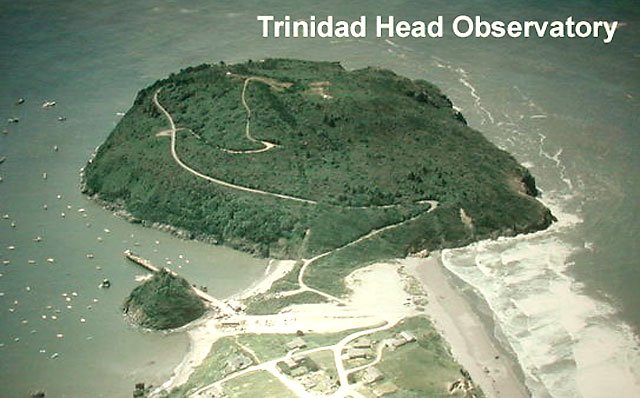
The HSU/NOAA Observatory will be part of the Global Atmospheric Watch (GAW) under the auspices of the World Meteorological Organization (WMO), which is headquartered in Geneva, Switzerland. The GAW coordinates 24 other global sites with some 700 regional stations. Trinidad Head is the only global site in the lower 48 states.
The upgrade of the facility places it in a world-spanning network that measures ozone, greenhouse gases, solar radiation, precipitation chemistry, meteorological phenomena and scores of other relevant data.
At WMO headquarters, the GAW secretariat in Geneva guides scientific advisory groups and world calibration centers to archive data about methane, carbon monoxide and surface ozone.
HSU alumnus Dr. James Butler (‘75, natural resource sciences), Director of NOAA’s Global Monitoring Division, took a lead role in arranging the upgrade. He called the Trinidad station “important in filling the gap in the global air chemistry observations as a marine boundary layer site at the Pacific coast. The station is placed in a region allowing assessment of several important issues to atmospheric chemistry.” Of six main areas tracked by the WMO, the Trinidad outpost spans four: greenhouse gases, reactive gases, vertical ozone profiles and aerosols.
Dr. James Howard, Dean of HSU’s College of Natural Resources and Sciences, said, “This is great news and validates the strong relationship that has existed for many years between NOAA’s Global Monitoring Division and HSU.”
Humboldt State Professor of Oceanography Jeffry Borgeld, Principal Investigator for the Trinidad Head Observatory, added, “The opportunity for Humboldt State students to be involved directly in the WMO’s Global Atmospheric Watch is unique and further enhances the already strong programs at HSU.”
The atmospheric station’s new international status builds on Humboldt State’s role as a key base for marine and environmental monitoring. University scientists from multiple disciplines are involved at the local, regional, national and international levels. Alongside atmospheric surveillance, marine observing is a major operation through HSU’s Department of Oceanography and its 90-foot ocean-going research vessel, the R/V Coral Sea. They participate in multiple Ocean Observing System (OOS) initiatives supported by a network that stretches up and down the California coast. Monitoring is conducted with moored sensors, radar installations and specially-equipped aircraft, as well as the R/V Coral Sea.
One such project is PaCOOS (Pacific Coastal Ocean Observing Program), a partnership of HSU and other academic institutions, NOAA’s National Marine Fisheries Service and the resource agencies of Western states, among others. Eventually, scientists will be able to evaluate how large changes in climate and the environment affect the Pacific seaboard’s ecosystems.